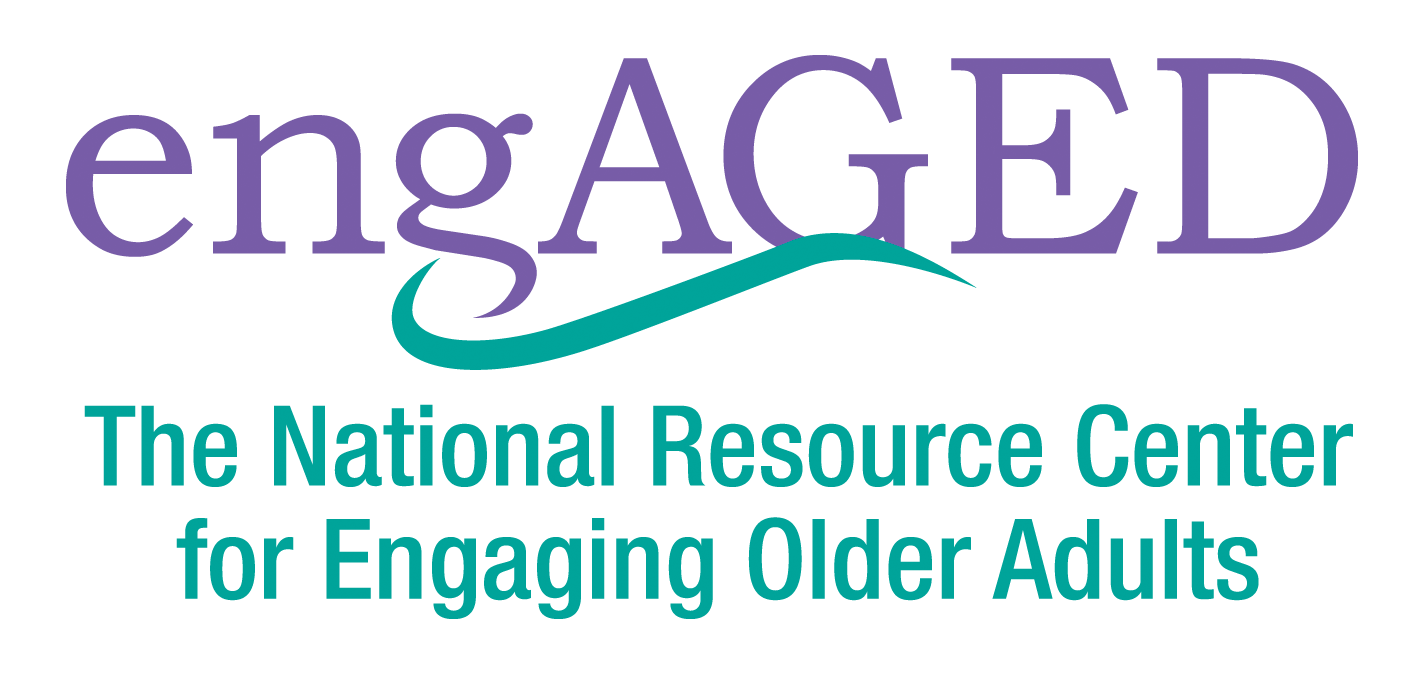Successful Programs, Activities and Approaches for Arts and Creative Engagement: Takeaways from the December engAGED Webinar
Arts activities provide opportunities for group participation and social support. Research shows that engaging in the arts can have a positive impact on cognitive outcomes[i], help reduce stress, promote positive social interactions and have therapeutic effects on morale, depression and loneliness[ii]. To help organizations in the Aging Network develop arts and creative engagement programming for consumers, our December webinar provided examples of successful arts programming and strategies for replication that can be used by the Aging Network.
Engaging Through Intergenerational Art-Making Sessions
Opening Minds through Art (OMA) is an intergenerational art program for people living with dementia that promotes creative self-expression through art. Headquartered at the Scripps Gerontology Center at Miami University, Scripps trains student volunteers to assist people living with dementia in art-making sessions. The program transitioned to a virtual platform in response to the COVID-19 pandemic, which allowed the program to increase its reach and expand its offerings beyond visual arts to include music, poetry and story building. For Aging Network professionals interested in incorporating OMA into their organizations, Scripps offers an OMA facilitator training. Scripps is also developing ScrippsAVID to expand virtual OMA activities at no cost on a video chat platform where older adults and students can be matched to participate in an arts activity together.
Reaching Homebound Older Adults with Arts Programming
In response to the COVID-19 pandemic, the Central Vermont Council on Aging (CVCOA) developed the Creative Care Kit project to provide social connection through creativity for homebound older adults. The pilot project provided participants with an art supplies kit to last several months and connected them to a Creative Companion volunteer completing the same activities. The kit included watercolor activities, a book with practice space, a music activity, questions from TimeSlips to inspire the work, resources from CVCOA and a pack of homemade greeting cards. A virtual art show occurred at the conclusion of the pilot project to celebrate the work of the participants. The success of the pilot project led to a new collaboration between CVCOA and the Vermont Arts Council to expand the kits and offer additional ways for participants to engage with others through group Zoom gatherings and virtual studio sessions. CVCOA is also partnering with the Vermont Arts Council to build creative aging capacity throughout Vermont by training professional teaching artists, sharing sample kits and activities with other Area Agencies on Aging in the state, building a creative aging resource hub and developing a creative aging networking website to bring together volunteers and aging services professionals.
Tips for Creating Arts Programming
Arts for the Aging designs, develops and delivers visual, performance and literary arts experiences for older adults in community and residential care settings in greater Washington, DC by engaging with caregivers, professional artists, museums, cultural institutions and other community partners.
Arts for the Aging offered the following tips for organizations looking to develop arts and creative engagement programming:
Start small and tailor your activities to the interests of participants. Play music and start a gentle dance chair party.
Connect with local artists and learn about other arts disciplines to provide culturally relevant activities.
Make virtual or in-person visits to museums and discuss with participants what they saw and felt.
Find ways to engage all five senses in activities that are simple yet dignified.
When facilitating activities, keep the atmosphere friendly and open, emphasize the process over the product, provide positive reinforcement, practice patience, embrace silence and welcome emotion.
Additional Resources
Speakers highlighted additional resources that organizations may wish to share with older adults and caregivers. The Creative Caregiving Guide© created by the National Center for Creative Aging offers video lessons that guide users through hands-on art experiences. The guide is designed for caregivers of adults living with Alzheimer’s disease and other related cognitive disorders. Arts for the Aging and Aging and the Integrative Pain Assessment and Management Initiative (AI-PAMI) at the University of Florida College of Medicine – Jacksonville developed a video series on the role the arts can play in pain management. The video series includes guided movement demonstrations from a teaching artist.
To learn more about the arts programming featured in the webinar and ways your organization can develop arts programs and activities, listen to the webinar recording and view the webinar slides.
[i] https://www.ncbi.nlm.nih.gov/pmc/articles/PMC4229893/
[ii] https://www.ncbi.nlm.nih.gov/pmc/articles/PMC6331422/
